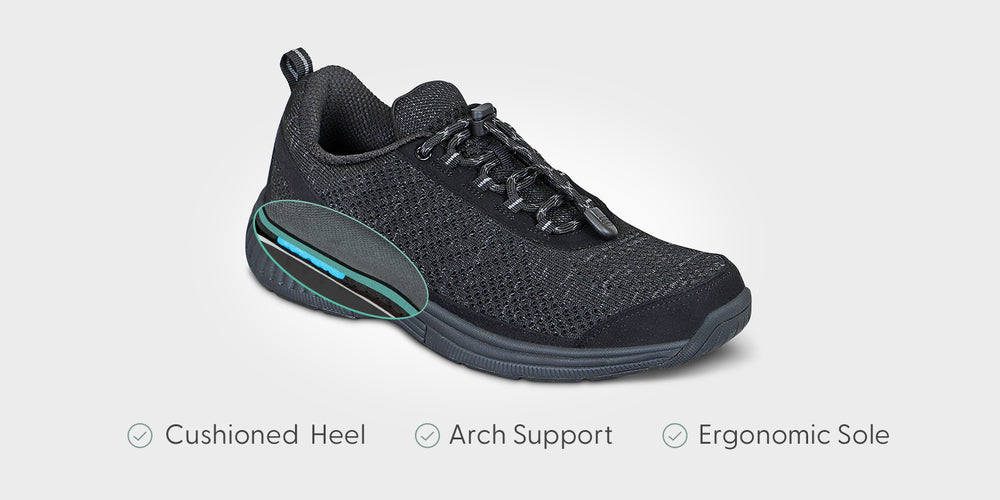Targeted Relief and Lasting Comfort
Orthofeet’s heel pain shoes are specially designed to alleviate discomfort caused by heel pain, whether from plantar fasciitis, heel spurs, or other foot conditions. These shoes incorporate advanced orthopedic features to cushion and support your feet, reduce impact on the heels, and promote healthy alignment. Ideal for work, exercise, or everyday wear, Orthofeet's men's and women's heel pain shoes help you stay active and comfortable throughout the day.
Why Choose Orthofeet Heel Pain Shoes?
Orthofeet’s heel pain shoes combine targeted heel support with cushioning and stability to relieve pressure and reduce pain with every step. Designed with premium materials and innovative features, these shoes are perfect for anyone seeking lasting relief from heel pain.
Key Features:
- Orthotic Insoles with Enhanced Arch and Heel Support: Each pair includes orthotic insoles that offer targeted arch support and additional padding around the heel, helping to alleviate pain caused by plantar fasciitis, heel spurs, and overpronation.
- Shock-Absorbing, Cushioned Soles: The lightweight, ergonomic soles are engineered to absorb impact, reducing stress on your heels, knees, and lower back, making these shoes ideal for standing or walking on hard surfaces.
- Heel Cushioning for Extra Protection: Special heel padding and support cradle your heel to reduce pressure and protect sensitive areas, allowing you to walk comfortably without heel pain.
- Wide Toe Box and Extra Depth: Orthofeet shoes are crafted with a roomy toe box that allows natural toe movement, preventing compression and providing comfort for bunions, hammertoes, and other forefoot issues.
- Soft, Seam-Free Interiors: With padded, seamless linings, these shoes minimize irritation and friction, making them ideal for sensitive feet and conditions like diabetes or arthritis.
Benefits of Orthofeet Heel Pain Shoes:
- Focused Pain Relief for Heels and Arches: By addressing the root causes of heel pain, our shoes provide targeted support and cushioning to alleviate discomfort, allowing you to walk pain-free.
- Improved Stability and Alignment: Orthotic support and ergonomic design promote proper alignment, enhancing balance and reducing strain on your joints with each step.
- Comfort for Long Hours: Designed for extended wear, Orthofeet heel pain shoes offer the support and cushioning needed to keep you comfortable all day, whether at work or on the go.
Ideal for Daily Wear and Active Lifestyles
Orthofeet heel pain shoes are versatile enough for any occasion, providing support and relief in various settings:
- Work and Daily Activities: Perfect for those who stand or walk for long hours, these shoes provide cushioning and support for pain-free movement during daily tasks.
- Outdoor and Leisure Activities: With durable, slip-resistant soles, Orthofeet shoes are ideal for walking, light exercise, and outdoor outings, keeping your feet supported and comfortable.
Say goodbye to heel pain with Orthofeet’s heel pain shoes. Discover footwear that targets the source of your discomfort and allows you to move with ease.
Shop the collection today and experience relief with every step!

